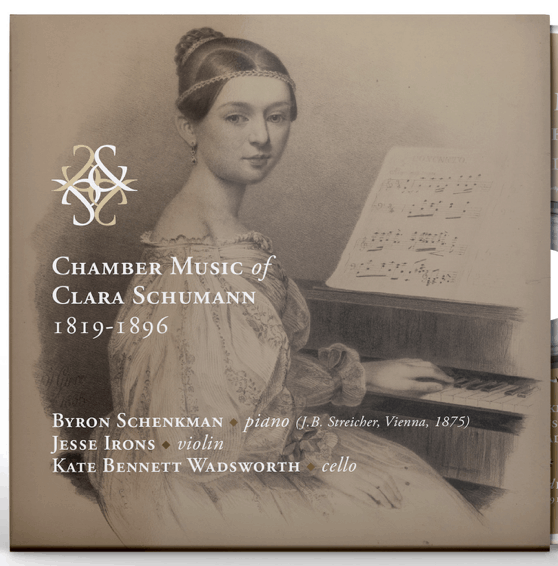In honor of the bicentennial of the birth of Clara Schumann, Byron Schenkman & Friends performed a special concert to honor her last weekend. It was a delight to hear some of her rarely-performed music, especially in such an exquisite performance. The musicians played like a single multi-faced instrument, weaving in and out of one another with energy, compassion and grace.
Clara Schumann was the First Woman Royal and Imperial Chamber Virtuosa at the Austrian Court. She was one of those rare women who had a monetarily-successful career with her own compositions and performances. In fact, she was successful enough to support herself and her struggling husband, Robert Schumann. After Robert died, Clara was the one who kept his music alive for posterity, facilitating his preservation in the classical canon. She, on the other hand, is largely ignored.
With the permission of Byron Schenkman & Friends, I am sharing the program notes from that concert (lightly edited). References to particular pieces of music were included in the performance.
Clara Schumann Bicentennial Celebration by Byron Schenkman & Friends
Clara Schumann, née Wieck, was one of the most influential European musicians of the 19thcentury. She began her career as a child prodigy whose performances dazzled international audiences and who published ten volumes of music while still in her teens. At 18, she was named “Royal and Imperial Chamber Virtuosa” at the Austrian court, a first for anyone so young, let alone foreign, Protestant, and female. For most of the century she was at the center of a circle of German musicians dedicated to preserving and continuing the legacy of what would come to be known as Western classical music.
Following her triumph in Vienna, Clara composed a piece she calledSouvenir de Vienne,which included variations on a theme by Joseph Haydn. Early in their marriage she and Robert Schumann jointly studied scores of chamber music by Haydn, Mozart, and Beethoven.
Clara’s only piano trio was composed in 1846 and published in the following year. Clara indicated in a letter that she had dedicated her trio to the pianist and composer Fanny Hensel (née Mendelssohn); however, that dedication never appeared in print. Johannes Brahms performed the work in 1854 in Hamburg, and the violinist Joseph Joachim reported that it was a great favorite at the Hannover court where he was employed.
In 1835 Felix Mendelssohn conducted the premiere of sixteen year old Clara’s Piano Concerto in A Minor, op. 7, with her as soloist. The middle movement, a romance in the surprising key of A-flat major, is a luscious song without words for piano solo.
Robert and Clara Schumann were lifelong companions, lovers, and close colleagues who studied music together and often critiqued each other’s work. Clara outlived Robert by four decades. After his tragic early death she worked tirelessly to edit, arrange, and oversee the publication of his complete works while also supporting their large family.
During one of their few happy years together, Robert wrote a series of exquisite chamber works including his only quartet for piano and strings. Clara premiered this work at the Leipzig Gewandhaus on a program which also included Bach’s Chaconne in D Minor and Beethoven’s “Waldstein” Sonata.


I am so enjoying hearing about these forgotten First Women on your blog!